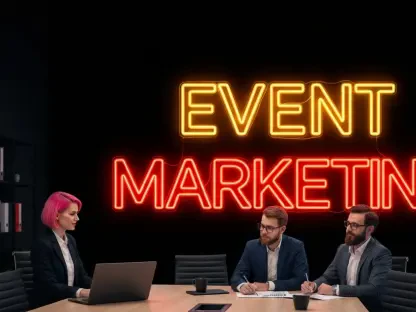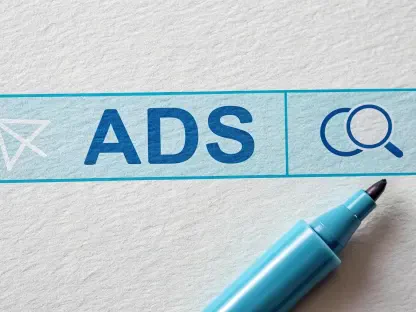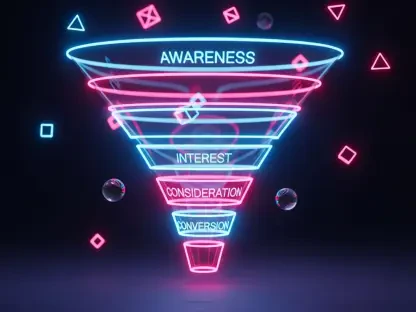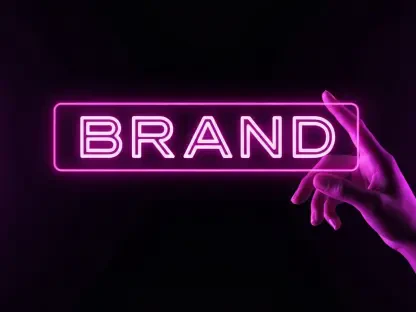What if millions of dollars spent on B2B marketing campaigns were simply vanishing into thin air, stolen by invisible fraudsters who leave behind nothing but fake leads and toxic data? This isn’t a hypothetical scenario but a harsh reality for countless businesses in 2025, where ad fraud has emerged as a devastating force. The high stakes of lead generation, a lifeline for B2B success, make this sector a prime target for sophisticated scams that drain budgets and derail strategies.
The importance of addressing this issue cannot be overstated. With B2B marketers under constant pressure to deliver qualified prospects, the infiltration of fraudulent data threatens not just financial resources but also trust between marketing and sales teams. This feature dives deep into the hidden crisis of ad fraud, uncovering its mechanisms, impacts, and the strategies needed to fight back against an enemy that operates in the shadows.
Why B2B Marketers Are Bleeding Millions to Unseen Threats
Ad fraud in B2B marketing is a silent epidemic, sapping budgets through deceptive tactics like fake leads and fabricated data. Unlike consumer advertising, where fraud might mean wasted clicks, in B2B, it strikes at the core of lead generation—a process that often costs thousands per qualified prospect. Fraudsters exploit routine tools like web forms and purchased lists, turning them into gateways for financial loss.
The scale of this problem is staggering. Industry reports estimate that ad fraud costs businesses globally over $80 billion annually, with a significant chunk impacting B2B sectors due to their reliance on high-value leads. Marketers, eager to meet quotas, may unknowingly funnel resources into campaigns built on lies, only to discover the damage when sales teams chase ghosts.
This invisible battle is fought daily, often without businesses realizing the extent of their losses. The complexity of digital advertising ecosystems, combined with the anonymity of fraudsters, creates a perfect storm where millions disappear before anyone notices the breach.
The High Cost of Deception in B2B Campaigns
Beyond mere budget waste, ad fraud in B2B marketing inflicts deeper wounds. The relentless focus on generating leads means that any compromise in data quality ripples through entire organizations, frustrating sales teams who waste time on unqualified or nonexistent prospects. This not only hampers productivity but also risks damaging a company’s reputation when campaigns fail to deliver.
Moreover, the dynamic nature of B2B data exacerbates the threat. Frequent job changes, company mergers, and other shifts mean that even legitimate datasets can become outdated quickly, creating openings for fraudsters to peddle recycled or entirely fake information. The result is a vicious cycle of inefficiency and mistrust.
The stakes extend to strategic decision-making as well. When analytics are skewed by fraudulent inputs, businesses may pivot toward ineffective markets or double down on failing tactics, unaware that their foundation is flawed. This hidden cost often goes unmeasured but can redefine a company’s trajectory.
Dissecting the Scam: Fake Leads and Poisoned Data Exposed
At the heart of B2B ad fraud lie two insidious culprits: fake leads and toxic data lists. Fake leads often originate from bots that auto-fill web forms or from human operators, frequently based offshore, who input false information for profit. These leads appear real at first glance but lead to dead ends, wasting time and resources.
Equally damaging are fabricated or outdated lead lists, sometimes generated by AI to mimic credibility. These datasets, sold by unscrupulous vendors, might include nonexistent contacts or irrelevant names, draining budgets as teams pursue mirages. Gated content offers and subscription promotions are particularly vulnerable, often targeted by scammers looking to exploit incentives.
A striking example is the rise of scraped data infiltrating campaigns. Fraudsters recycle old records or harvest information from public sources, repackaging it as fresh leads. Marketers, unaware of the deception, pour resources into these traps, only to find their efforts undermined by data that was never viable to begin with.
Industry Warriors Speak Out on Battling Fraud
Veterans in the field have seen the toll of ad fraud firsthand and are sounding the alarm. Jeffrey Feuer, CEO of Customer Solutions Group, has spent over three decades qualifying leads for industries like insurance. “Most bulk leads from aggregators aren’t sales-ready,” Feuer notes, highlighting how his call centers filter out fake phone numbers and junk data before they reach clients.
Feuer advocates for innovative defenses, such as “honeypot” fields—hidden form elements that bots fill out but humans ignore, exposing automated fraud. His insights align with broader industry efforts, including tools like FouAnalytics, developed by fraud detection expert Dr. Augustine Fou, which help identify suspicious patterns in form submissions.
These voices from the frontline underscore a critical truth: while fraudsters grow more cunning, solutions are evolving to match them. Experts emphasize that awareness and technology must combine to protect B2B marketers from an ever-shifting threat landscape, offering hope amid the challenges.
Equipping B2B Marketers with Tools to Fight Back
Combating ad fraud demands actionable strategies, and B2B marketers have several options to safeguard their lead generation efforts. For web forms, deploying fraud detection tools like Cheq or Anura can flag bot activity, while simple additions like CAPTCHAs or qualifying questions deter low-quality submissions. These measures, though sometimes reducing volume, prioritize quality over quantity.
When it comes to lead lists, caution is paramount. Bargain-priced data often signals trouble, and thorough vetting of vendors—examining their sourcing methods and compliance with privacy laws—can prevent costly mistakes. Testing small samples with strict targeting criteria also helps ensure that purchased data aligns with campaign goals.
A broader framework of vigilance is essential. Marketers must stay informed about emerging fraud tactics, from phishing schemes mimicking vendors to black-market data trades. By combining technology with skepticism, businesses can reclaim control over their marketing investments and build stronger, more reliable funnels.
Reflecting on a Persistent Battle
Looking back, the fight against ad fraud in B2B marketing revealed a landscape where deception had woven itself into the fabric of digital strategies. The silent theft of budgets through fake leads and toxic data had caught many off guard, leaving sales teams frustrated and resources depleted. Yet, the response from industry leaders and innovators had begun to shift the tide.
The path forward demanded more than just awareness—it required relentless action. Businesses had to integrate robust tools, refine their vetting processes, and foster a culture of scrutiny to outpace increasingly sophisticated fraudsters. Only through such dedication could the integrity of B2B lead generation be preserved for the challenges ahead.









